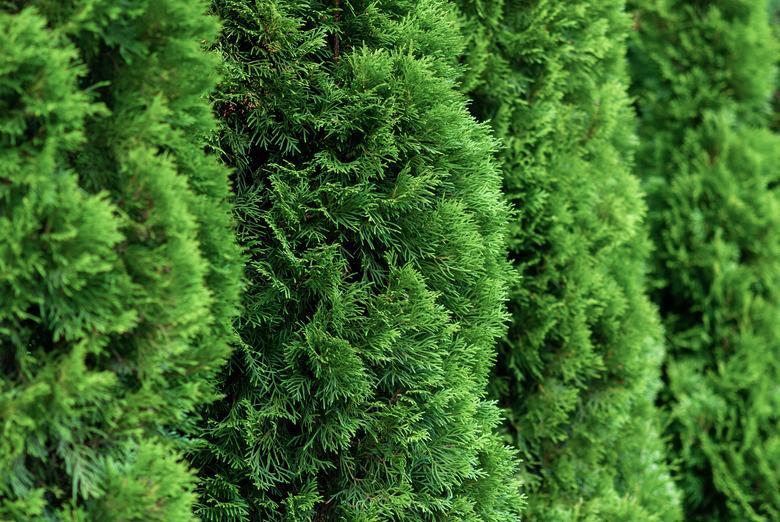How To Revive A Dying Cedar Hedge
Whether your cedar hedge is composed of "false" cedars, such as the American or Eastern arborvitae (Thuja occidentalis, U.S. Department of Agriculture plant hardiness zones 2 through 7), or "true" cedars, such as the deodar cedar (Cedrus deodora, zones 7-8), you may notice signs that the hedge is beginning to die. If you spot browning needles or the onset of root rot, it is important to take action quickly to save the hedge before it's too late. Depending on what's causing its symptoms, reviving your dying cedar hedge may not be possible, but it's worth a try.
Addressing Soil and Water Issues
One of the main reasons cedar hedges die involves the amount of water they receive. Cedar trees do not root deeply into the soil, so, if you're experiencing a drought, for example, your trees may show their need for water by turning brown. Additionally, if you have soil that is sandy and drains relatively easily, you may need to water your cedar shrubs more often to help revive them so they can return to their lush green color.
There's an unfortunate flip side connected to cedar hedge watering. If your soil retains lots of water, your hedge could be suffering simply because the soil is so wet that the trees are unable to breathe. The roots begin suffocating due to lack of oxygen, and they begin to die, which can also cause your hedge to turn brown. Researching your soil type and consistently monitoring rainfall in your area can help in reviving your hedge. You can also help revive your cedar hedge during a drought by adding mulch to within a few inches of the base of the trees to retain soil moisture.
Eradicating Harmful Chemicals
If your lawn care regimen involves using pesticide spray or even lawn fertilizer, you may be hurting your cedar hedge without realizing it. A hedge often lines the edges of a property where grass can also be found. If this is the case with your cedar hedge, it may be suffering due to the chemicals you're using elsewhere in your landscape. You may be able to revive your dying cedar hedge simply by not using the chemicals you spray or scatter on your lawn and gardens.
Dealing With Pests and Fungi
It's very important to monitor your cedar hedge to make sure that no fungal or other disease has begun forming. As a result of root rot, white fungal mycelium can develop, killing a cedar tree and — because the fungus spreads easily from tree to tree — other trees surrounding it. If you notice white filaments at the base of a tree, it's best to remove the tree immediately to help prevent the spread as there's no cure for this disease. Many other diseases, such as various foliar blights, can be treated using fungicides.
It's important to use the right treatment option for your cedar trees in order to avoid further harm. Through thoughtfully chosen treatment, you may be able to revive your hedge and return it to its healthy state. Consult the experts at your local cooperative extension office for their diagnosis and recommendations for your ailing plants.
